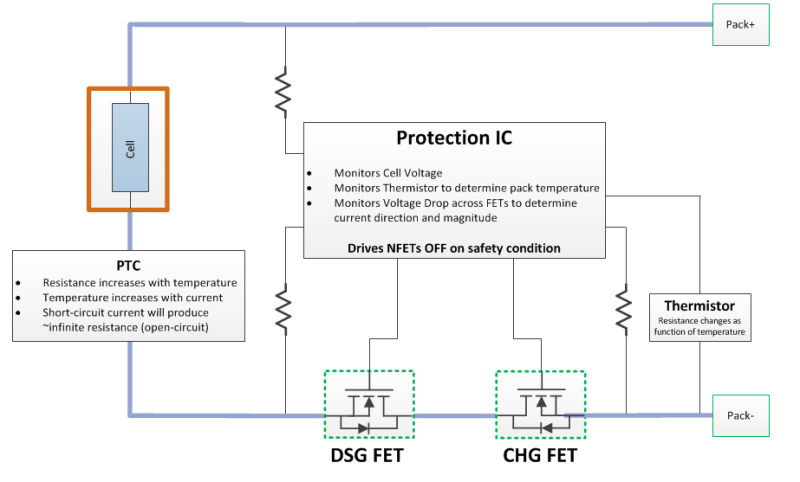Two hundred and sixty eight years ago today, Italian physicist, Alessandro Volta, was born in a small town in Como, Italy. At the age of 55, Volta invented the first battery, and as a result, today the world celebrates National Battery Day! Batteries have come a long way since the turn of the 19th century, so on this National Battery Day, lets celebrate the evolution of battery safety, dating all the way back to Mr. Volta himself.
 Volta’s namesake invention, the voltaic pile, was comprised of pairs of copper and zinc discs piled on top of each other. The discs were separated by a layer of brine-soaked cloth, which served as the electrolyte. The battery lasted an hour at best and came with several challenges, such as short circuits caused by electrolyte leakage. Yes, even back in 1800 electrical engineers were challenged by battery performance and safety! To solve this performance challenge, the voltaic pile was turned sideways and placed in a box, becoming known as the trough battery.
Volta’s namesake invention, the voltaic pile, was comprised of pairs of copper and zinc discs piled on top of each other. The discs were separated by a layer of brine-soaked cloth, which served as the electrolyte. The battery lasted an hour at best and came with several challenges, such as short circuits caused by electrolyte leakage. Yes, even back in 1800 electrical engineers were challenged by battery performance and safety! To solve this performance challenge, the voltaic pile was turned sideways and placed in a box, becoming known as the trough battery.
 Fast forward 60 years when French physicist, Gaston Plante revolutionized battery power by inventing a lead-acid battery that passed reverse current through the system, making it the world’s first rechargeable battery. Yet, the lead-acid battery also suffered from electrolyte leaks, posing safety risks to end-users. It wasn’t until the 1970’s when sealed lead-acid batteries were developed, using a gel electrolyte instead of liquid to prevent leakage.
Fast forward 60 years when French physicist, Gaston Plante revolutionized battery power by inventing a lead-acid battery that passed reverse current through the system, making it the world’s first rechargeable battery. Yet, the lead-acid battery also suffered from electrolyte leaks, posing safety risks to end-users. It wasn’t until the 1970’s when sealed lead-acid batteries were developed, using a gel electrolyte instead of liquid to prevent leakage.
In 1899, battery chemistry advanced again when nickel-cadmium batteries were introduced, becoming popular in portable power tools, flashlights, etc. However, safety and environmental risks associated with disposing cadmium caused researchers to develop nickel-hydrogen and nickel metal-hydride batteries.
 In the early 1900’s experimentation began on lithium batteries due to lithium’s impressive electrochemical potential and energy-to-weight ratio. Early models were based on metallic lithium, which offered high energy density but inherent instability issues. By the late 1980’s a more stable version of the lithium battery, the lithium-ion battery, was developed and first commercialized by Sony in 1991.
In the early 1900’s experimentation began on lithium batteries due to lithium’s impressive electrochemical potential and energy-to-weight ratio. Early models were based on metallic lithium, which offered high energy density but inherent instability issues. By the late 1980’s a more stable version of the lithium battery, the lithium-ion battery, was developed and first commercialized by Sony in 1991.
Recent high-profile lithium battery safety incidents have underscored the need for our industry to better understand failure modes, develop better characterization tools, and learn from the improvement of energy storage technology safety. Most importantly, the commercial market must add safety layers into the balancing, failure forecasting, and detection of catastrophic event precursors in order to maximize the operational safety of cells, module and packs.
 At Palladium Energy, we’re proud to be the only custom battery pack manufacturer with an independent, CTIA Authorized testing facility. Located in Shanghai, IQ Laboratories is our mark on battery history – leading the way to safer battery packs with lithium technologies. We’ve proven that performance testing, environmental testing and R&D can mitigate risks, such as thermal runaway. In nearly 40 years, we’ve shipped more than half a billion battery packs without a major customer recall or safety issues.
At Palladium Energy, we’re proud to be the only custom battery pack manufacturer with an independent, CTIA Authorized testing facility. Located in Shanghai, IQ Laboratories is our mark on battery history – leading the way to safer battery packs with lithium technologies. We’ve proven that performance testing, environmental testing and R&D can mitigate risks, such as thermal runaway. In nearly 40 years, we’ve shipped more than half a billion battery packs without a major customer recall or safety issues.
We’re enormously proud of our record and our industry – innovating power solutions to meet next-generation needs! Happy National Battery Day!
 – Rebecca Kritzman, director of marketing and communications
– Rebecca Kritzman, director of marketing and communications









